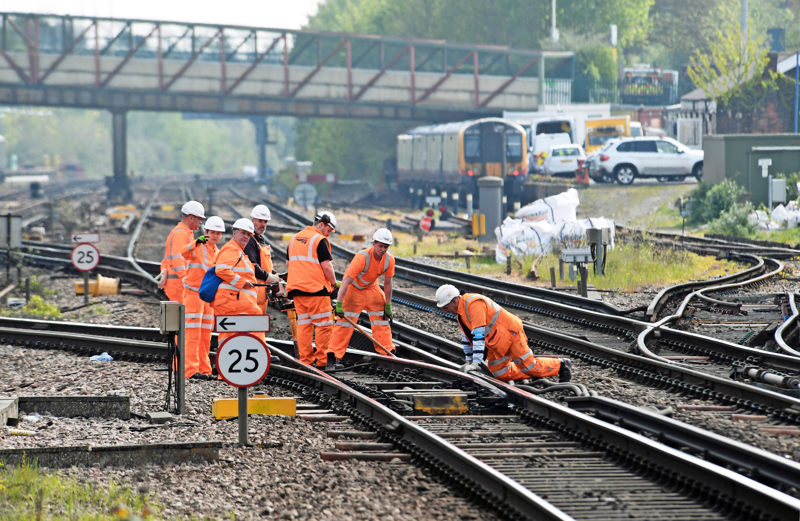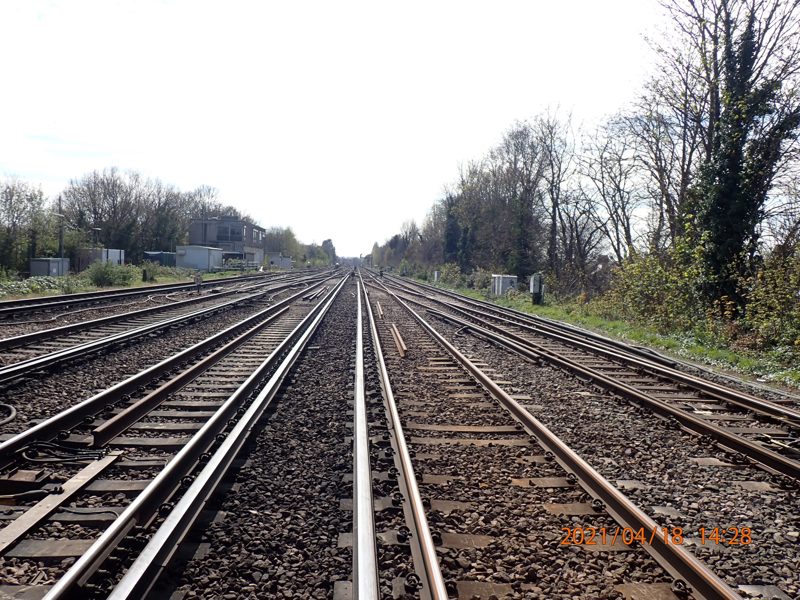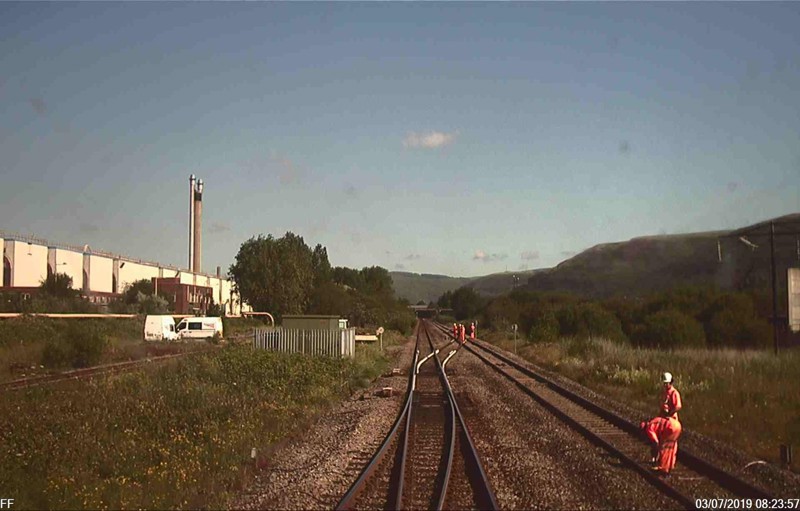
“We work completely differently to back in those days, but we’re never finished.”

“We work completely differently to back in those days, but we’re never finished.”
So says Martin Frobisher, Group Safety and Engineering Director at Network Rail.
NR was fined a collective total of £7.16 million in February, following the deaths of three track workers in two separate incidents - £3.75m after the deaths of Gareth Delbridge (64) and Michael Lewis (58) at Margam in South Wales on July 3 2019, and £3.41m after the death of 30-year-old Tyler Byrne at Surbiton on February 9 2021.
Speaking exclusively to RAIL, Frobisher and Richard Hines, HM Chief Inspector of Railways and Director of Railway Safety at the Office of Rail and Road (ORR), expressed their sympathies to those affected by the deaths, and outlined the work that has been done (and continues to be done) to improve track worker safety.
Reflecting on the workers who had died, Frobisher said: “Meeting with the families (of Delbridge and Lewis) after it happened, the suffering these things cause is terrible.”
Referring to the striking impact of statements from relatives of all three workers, Hines added: “It’s right to reflect on the loss of those lives, and the impact it’s had on their loved ones and those who are left behind.”

Both described a “step change” in improving track worker safety in the years since.
In the weeks leading up to Margam, ORR had been working on two enforcement notices, calling on NR to improve its adoption of technology and implementation of safety measures. These were issued five days after the fatal collision.
Hines said that while both enforcement notices had been met, there was still more to be done, and that the job to improve track worker safety was “not completely done”.
Figures from the Rail Safety and Standards Board show how railway worker safety has improved. In 1920, 420 members of staff died on the railway - most of them track workers. Since Tyler Byrne’s death four years ago, no track worker has been killed.
The number of near misses has fallen from 60 in 2018-19 to 22 in 2023-24.
One of the key drivers to improving safety has been the almost total elimination of unassisted lookout working - except only in sidings where speeds are low, and where a lack of signalling infrastructure makes possession work impractical.
Less than 1% of work on NR is carried out with unassisted lookouts.
By May 2022, around 6,000 workers had handed back their lookout competencies, but more than 14,000 remained.
As of March 2025, that figure had fallen dramatically to 2,123; 1,832 of those were held by NR staff and the other 291 by members of the supply chain.
Confused about location

Investigations into the death of Byrne, who was in the four-foot of a crossover linking the Down and Up fasts when he was struck by a Down train approaching from behind, found that he was potentially unaware of his position.
The Rail Accident Investigation Branch (RAIB) report said that witness evidence supported “the possibility that it can be confusing to know exactly where you are when in junction areas”, while the prosecution said the risk of a track worker being confused as to their exact location in a complex track area “was not included when the safe work pack was developed”.
Other work is also designed to help track workers know their location, to avoid situations such as being on the wrong line without realising.
Work has also been done to improve the information given about access points, track layouts and diagrams, while detonator protection is also being wound down.
The Surbiton investigation uncovered how the patrol diagram used for basic visual inspections did not recognise the risk for someone in the path of a train, while following that diagram.
Hines commented on the need for “clear instructions” in the diagrams, adding: “A person needs to remember them in the moment.”
Track workers using track circuit operating devices also become visible on signallers’ panels, while an access point app shows workers’ potential routes onto the lineside and where they are, gives clear directions, and shows track plans and the directions of traffic.
Standard 019

In his sentencing remarks at Swansea Crown Court, in the Margam case, the judge, Recorder Christian Jowett, said Standard 019 was “substantially based on a number of unsuccessful initiatives” and that NR “released a number of mistakes and introduced further mistakes” - including with regards to line blockages.
Standard 019 is the set of guidelines for managing the safety of people working on or near the railway, something Hines described as “Network Rail’s risk assessment”.
RAIB’s report into the Margam deaths said that in the months following the ninth update, feedback from staff included confusion about roles and responsibilities, the quality of training, and inadequate compliance checking.
Frobisher said that in recent years NR has simplified Standard 019, and it now contains more “understandable information”.
He admitted: “It was not right on the day of Margam and Surbiton. There are further improvements we need to do. To say it’s finished would be wrong.”
However, he said Standard 019 was “hugely better than anything previously”.
Hines highlighted the importance of making sure staff understand and follow the standard, particularly when working in challenging conditions.
Frobisher said NR wants the RailHub (the workspace used to plan and deliver work) to be used by the supply chain, as well as continuously making minor improvements to make it more user-friendly.
Despite the progress, Frobisher admits that some areas of NR could have responded more quickly to change, particularly after Margam.
The prosecution in the case of Byrne’s death said there was a “tragic lack of urgency”, and Frobisher acknowledged there was a “sense the Wessex route could have gone further, quicker”.
But he said that one of the reasons it took three years to fulfil the requirements of the improvement notices was the careful planning and liaising with train operators, as more work moved to possessions.
Hines pointed out that moving to night-time work was not without risk, but NR’s challenge was to find the optimal solution as they look to do as much as is practicable.
Unions and staff relations
Hines said that to make improvements, “bringing the workforce with you” was vital, adding: “You’ve got to convince people it’s being done for the right reason.”
In its Margam report, RAIB had recommended that NR improves its safety reporting culture.
Frobisher said staff have the right to stop work if they feel it’s not safe.
“It’s not going to affect their job or future. Quite the opposite,” he said, adding that NR leaders would stand “shoulder to shoulder” with those who raise legitimate safety concerns, and that if something was a genuine mistake the company would not hold it against them.
There are also numerous other confidentiality methods in place.
Hines said ORR would be “making sure people are really clear on routes of escalation”.
ORR has also been working with other infrastructure owners such as Transport for London, where a track worker was struck in 2022, to improve safety and apply learnings from Margam and Surbiton.
Hines praised unions for being “hugely helpful and supportive in reflecting the challenges” as they work with ORR’s Head of Inspection Tom Wake.
Speaking about track worker safety, TSSA General Secretary Maryam Eslamdoust said that since the deaths in 2019 and 2021, NR had “worked closely with TSSA and other unions to make the railways safer for everyone, and as a result the risk to track worker safety has been significantly reduced”.
“The sentencing underlines the importance of safe working conditions on the railways. Trade unions have a key part to play in this and TSSA will always speak out to ensure safety standards are met and improved, for the benefit of rail workers and passengers.”
The RMT’s General Secretary, Mick Lynch, added that the union would “continue to press for the safest possible railway which means clear and unambiguous safety systems that protect all staff and passengers”.
Login to continue reading
Or register with RAIL to keep up-to-date with the latest news, insight and opinion.


















Login to comment
Comments
No comments have been made yet.